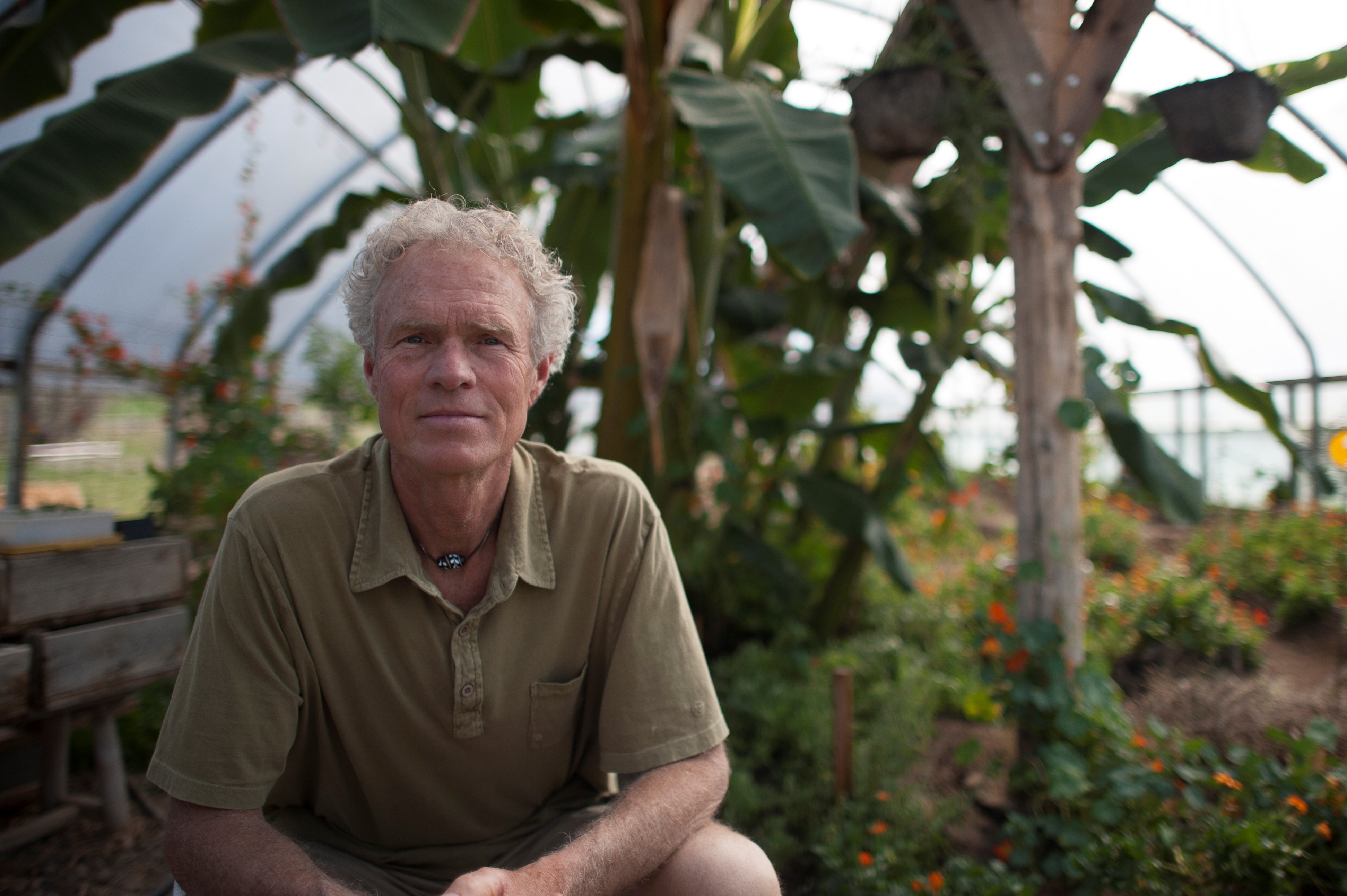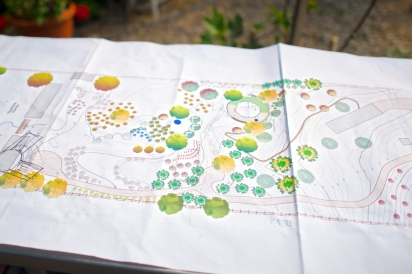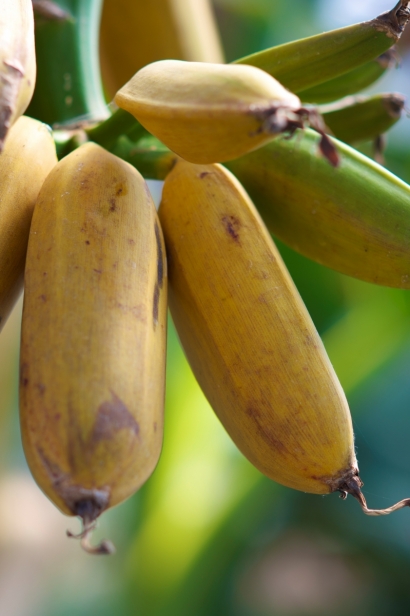Agricultural Possibilities in Hagerman
I always seem to bump into James Reed in forests of baby greens, verdant citrus groves, or some other slightly surreal version of Eden. Today it’s under the broad leaves of a banana tree; its clusters of fruit hanging over our heads like heavy, yellow chandeliers.
Reed, with his handsomely etched face and searching eyes, fits my vision of a storied equatorial explorer. But Reeds explorations haven’t been imagined. In his younger days, he traveled the world, mostly on foot, spending years in places like Asia, India, Nepal, and the South Pacific. So there’s really nothing surreal about finding him under a banana tree—apart from the fact that it’s the dead of winter and this tree is rooted in the hot-springs-tempered soil of a Hagerman Valley greenhouse.
“I became a searcher of hot springs,” Reed says of his years of travel and particularly admired the traditions surrounding onsens, or Japanese hot springs. “Onsens in Japan are where people go to rejuvenate and revitalize,” he says of the beautiful retreats. “With my background in the Japanese marshal arts [Reed has also earned a Black Belt], I liked the whole vibe, and so that, in some sense, steers and informs what we do here.”
But even then Reed was cautious: “It remains to be seen if it’s economical to raise food in greenhouses,” he had said.
At the time it wasn’t. No matter how local, fresh, and flavorful that crazy assortment of winter produce was, it couldn’t compete against the annual onslaught of cheap, industrial produce trucked in from California, Florida, and Mexico. The greens didn’t pencil out, and the neighbor’s property is now on the market, the future of its citrus grove in question.
But James Reed is nothing if not resilient. Today he thinks Idaho consumers are more eager to purchase local, winter crops than ever before. “I’m just naive enough,” he says, “to think we can still make a difference.”
The Reeds are now concentrating their energies on Onsen Farm— planting, landscaping, and building nothing less than a model farm for the future, but also developing an agricultural learning center to share the possibilities. In November they held their first ambitious educational event: a sold-out, six-day-long, seed school that drew people from around the country. They hope to eventually offer those kinds of classes and workshops monthly. They’ve also erected three geothermal greenhouses with close to 8,000 square feet of growing space that, along with the banana, includes young lime, lemon, tangerine, guava, pomegranate, and fig trees, plus leafy greens and an aquaponics system. They sell produce through Idaho’s Bounty now and plan to offer a winter CSA next year.
“What we’re trying to do here,” Reed says, “is not only create an economy through what we do on our farm to sustain Leslee and me, but also bringing people in, giving them the confidence to take a stab at one of these emerging [agricultural] opportunities.”
Reed admits the banana tree may not be one of those opportunities: So far it takes up too much greenhouse space for the number of bananas it produces (enough, though, for Leslee to bake the occasional banana tart). It is, however, an excellent symbol of possibilities—a phrase I’d say perfectly fits James Reed himself.







